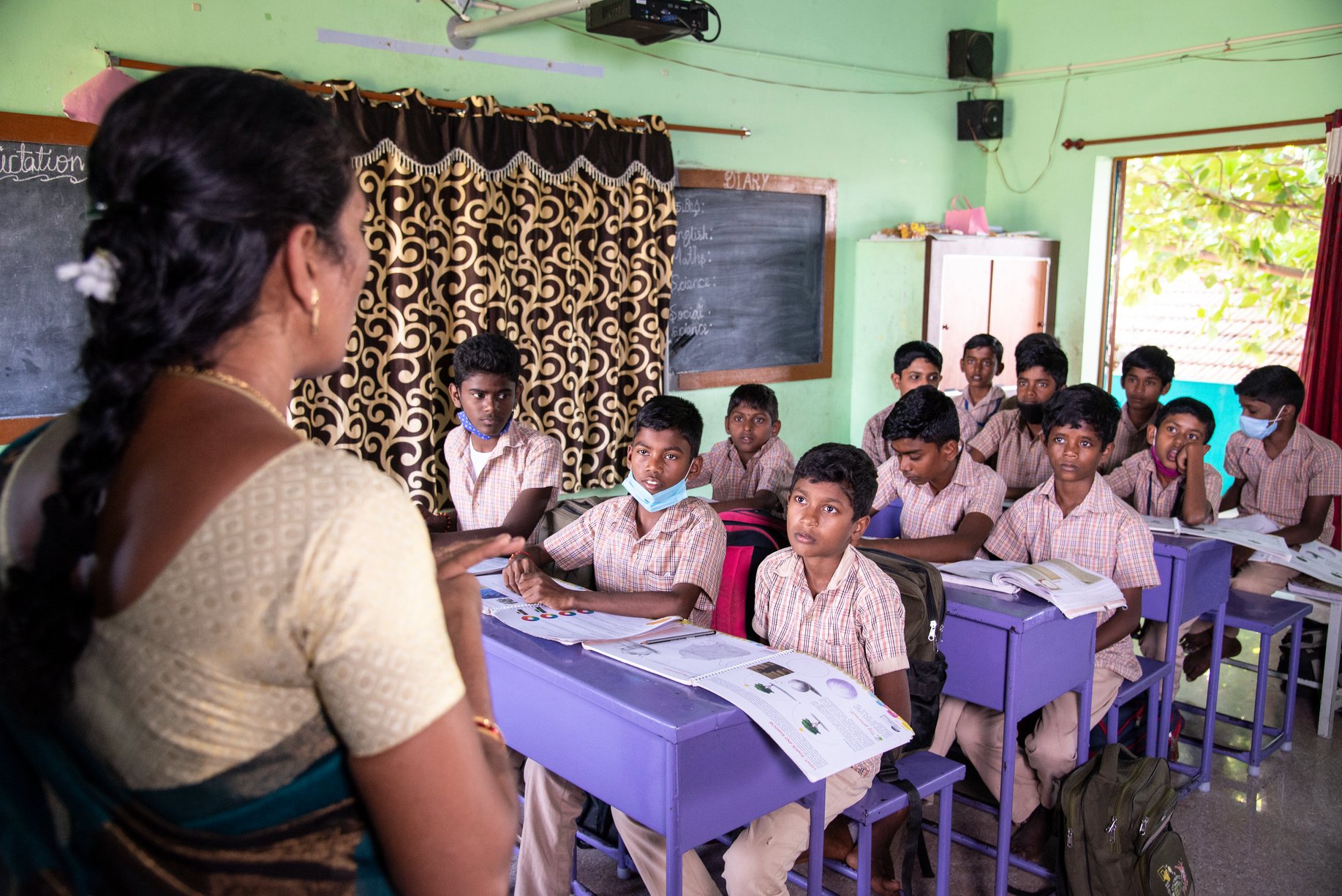Problem:
Learning loss is a common problem in classrooms globally. While several tools can be adopted to boost foundational literacy and numeracy skills, the fundamental premise of learning loss is more psychological. So it’s imperative for learning to develop fear-free environments where children feel safe so that losses can be minimised and learning is retained.
The problem of learning loss has been especially exacerbated by the disruption caused by Covid-19. While many interventions and systems have been put in place to help children overcome this challenge, this case study throws light on how one two-teacher school in Tamil Nadu practised safety, engagement, curiosity and critical thinking to boost positive learning environment.
About the school:
Panchayat Union Primary School Kannigapuram, a two-teacher school in Marakkanam block, Villupuram district, Tamil Nadu, India, truly believes in quality student engagement. With fear being a common impediment to learning in classrooms, the teachers here create a positive learning environment to improve students’ engagement and overall learning outcomes. Ms Lakshmi, the Headteacher of this school, strongly believes that a child can start exploring their learning abilities only once they feel safe and confident.
She shares with great joy and pride an example to prove her previous point. A former student who qualified in a district-level exam conducted for students from underserved communities was not confident. “He was fixated on never being able to learn English”, she recalled. However, Ms Lakshmi’s first instinct was not to scout for the best pedagogy but to instil in him the confidence that he could do it. The teachers first motivated and coached him into believing that the task ahead of him was achievable, leading him to eventually clearing the exams with flying colours.
This was not a one-off intervention, but a philosophy practised by the school in their everyday teaching. Ms Kalyani, the assistant teacher, believes that the school’s teaching should kindle every child’s curiosity to learn and make the journey enjoyable, for the learning to sustain.
“In most classrooms, only children who know the right answers raise their hands, but I aim to create a classroom where every child raises their hands.” – Ms. Kalyani
Strategies adopted:
As per cognitive science, easy-to-understand lessons should be designed to instil the joy of learning in students. Regardless of what the topic is, an inspiring teacher can help students overcome various learning challenges. The teachers of PUPS Kannigapuram credit some of STiR’s strategies in helping them practise their philosophy. She particularly found strategies like ‘Hook’ and ‘Stretch It’ as helpful tools.
- ‘The Hook’ is a short introductory routine that piques the interest of students, fires their imagination and makes them curious. This results in more attentive students who eagerly engage in the classroom. For example, a short teaser to excite students about what they will learn in the classroom that day can keep them hooked for the entire lesson. The hook is also an efficient method to prevent students from getting distracted in the course of the lesson. It can involve using riddles and puzzles to engage the children when they lose interest in the classroom, as opposed to rote learning techniques. It helps foster child engagement while boosting their cognitive memory. The teachers applied this strategy to lesson planning as well. For example, students in grade 4 were given a project from grade 5 to prepare them for their upcoming year, which developed their curiosity.
- ‘Stretch It’, was introduced to encourage deep thinking in students and build knowledge into their long-term memory. Intelligently formulated questions boost children’s curiosity and critical thinking, contributing to improved assimilation of content. These questions were open-ended, out of the box and not textbook centred, making the process more interesting. She adds, “we start this exercise at grade 1 and apply it to every chapter. This helps them repeat questions at home, put on their thinking caps and use this tool to recall what has been taught.” Ms Kalyani shared a set of questions she had prepared as a follow-up to this strategy. She had meticulously prepared questions for each chapter to help children engage with the content better.
“Children might find lessons a mere play, but as a teacher, I am aware that they are learning.” – Ms. Kalyani
Reopening of schools:
As schools were shut for 18 months due to the pandemic, Ms Kalyani spoke about how they engaged with the students. They were consistent in providing them with assignments which could be performed with both interest and independence. The school grew from a strength of 20 to 53 when the schools reopened after the lockdown. Due to the positive engagement in her school between 2020-22, neighbours removed their children from private schools and enrolled them in PUPS Kannigapuram.
In PUPS Kannigapuram, we have seen a significant shift in learning levels in the classrooms. Safe and engaging classroom environments, fundamental to STiR’s classroom engagement strategies, have played a key role in shaping student learning in this school.
The fight against learning losses isn’t over yet. However, as students in this school are coming back for regular in-person classes, the challenge to make education fun-filled continues.
“The school’s focus is also to produce confident children, by steering students from the known to the unknown. She shares “If a child does not know to write ‘கு’ from the word ‘குடம்’, my first focus is to emphasise that they can write the other two letters ‘ட’ and ‘ம்”. Here my goal is to simply teach ‘கு’, so I encourage them to feel confident so that they can write one whole word.” – Ms. Kalyani


